Installing a grand piano
You've made your decision, you've bought a grand piano! A dream that is shared by many but only achieved for some. At least - so it seems. Many people do not realise that there are also good compact grand pianos for sale, and they are often less expensive than you might think! But how do you know for sure that a grand piano will fit?
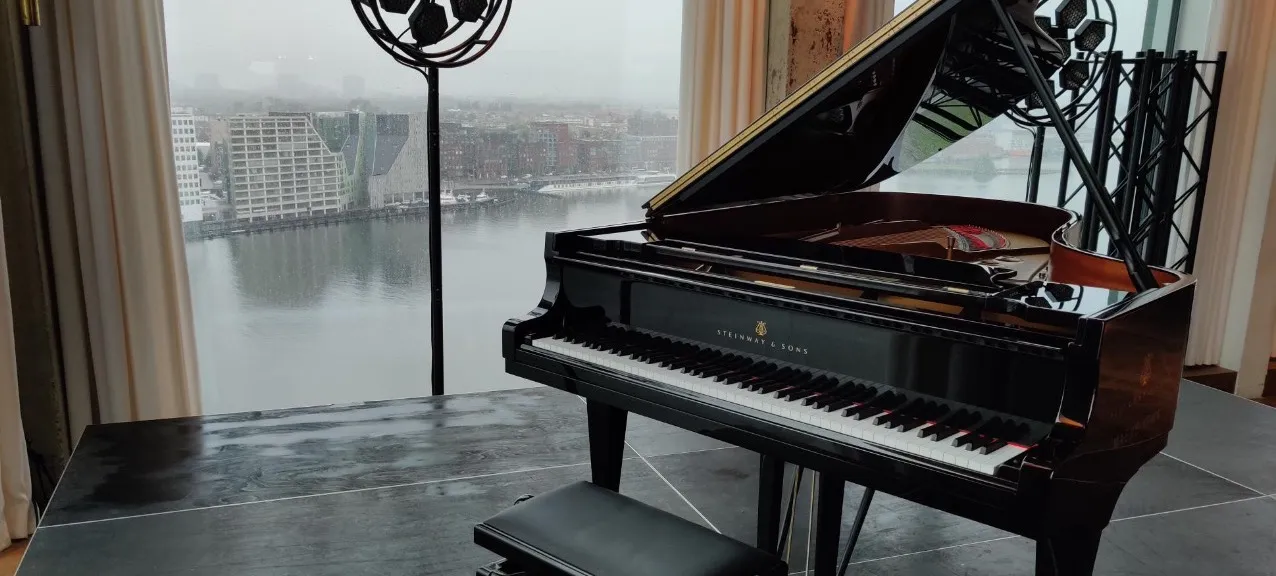
Many customers looking for a grand piano have no idea where to place the instrument. Often, customers do know in which room the instrument will be placed, but that's it. It is important to give this some thought beforehand. How much space is available exactly? And where do I intend to place the piano?
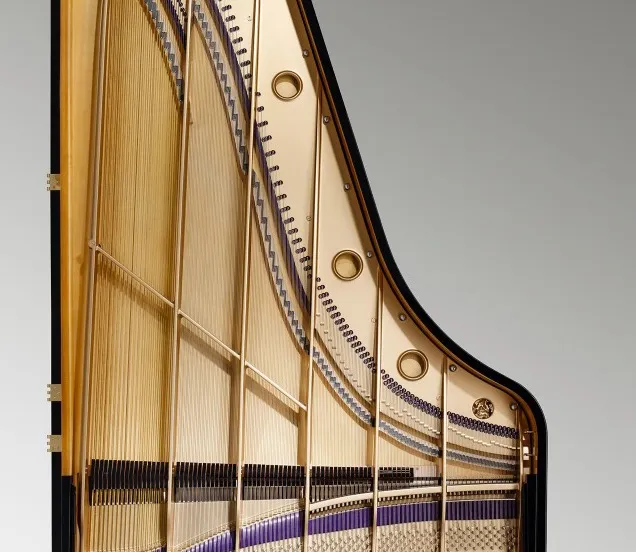
How big is a grand piano?
In terms of length, the smallest size is 150 cm and the largest is 284 cm. Grand pianos are almost all the same width, around 155 cm. The grand piano also has a curve. From the right there is a small straight part before the first curve. The length of this is about 80 cm. The height is often 100 to 105 cm.
To summarise: the height, width and the first curve, starting at the right front, are often the same for different brands. The length varies per model and brand. Easy, right?
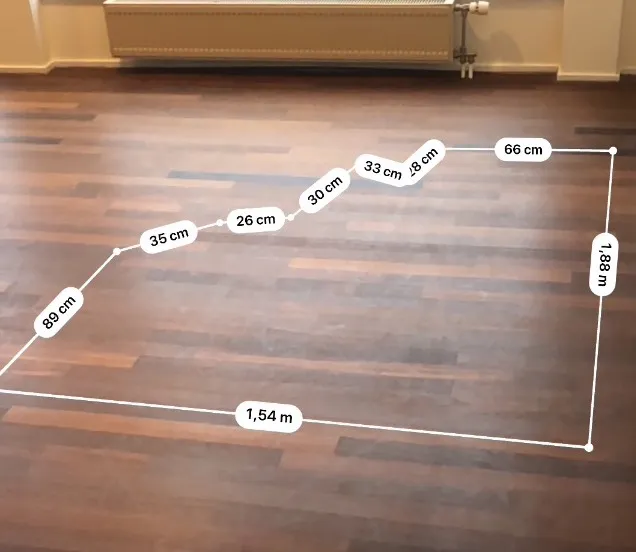
Measure it
Onderschat vooral niet hoe belangrijk het meten is. Je wil wel dat de vleugel uiteindelijk in huis past. Er zijn verschillende manieren om een vleugel in een kamer uit te meten.
Plattegrond
Maak een plattegrond (op schaal) van de kamer met alles wat er in de ruimte staat. Teken op een ander blad de vleugel en knip de vleugel uit. Ga vervolgens passen en meten. Soms moet een tafel op een andere plek staan om ruimte te maken voor de vleugel. Past het niet? Gewoon de tafel weg doen! Je zal toch alleen maar achter je prachtige, nieuwe vleugel gaan zitten.
Digitaal meten
Er zijn apps waarmee je kan meten door middel van digitale augmentatie, een manier om objecten virtueel in de gewenste ruimte te plaatsen om zo te kijken of deze passen. Met deze apps kan je meten of de vleugel zal passen. Deze app staat standaard op elke recente iPhone en heet vaak Meten of Measure. Er zijn ook andere apps te vinden die hetzelfde kunnen. Typ het woordje meten in bij een app-winkel en er zijn tientallen varianten te vinden. Het geeft een goed beeld van hoe groot de vleugel is. Op de afbeelding kan je zien hoe ik grofweg een Steinway A-188 heb uitgemeten.
Above all, do not underestimate the importance of measuring. You do want the grand piano to fit in the house in the end. There are different ways to measure a grand piano in a room.
Floor plan
Make a map (to scale) of the room with everything in it. Draw the grand piano on another sheet and cut it out. Then fit and measure. Sometimes a table has to be moved to create space for the piano. It doesn't fit? Just get rid of the table! You will only sit at your beautiful new grand piano anyway.
Digital measuring
There are apps that allow you to measure by digital augmentation, a way of virtually placing objects in the desired space to see if they fit. With these apps you can measure if the grand piano will fit. This app is standard on every recent iPhone and is often called Measuring or Measure. There are also other apps that can do the same. Type in the word Measure in an app shop and you will find dozens of variants. It gives a good idea of how big the piano is. On the picture you can see how I roughly measured a Steinway A-188.
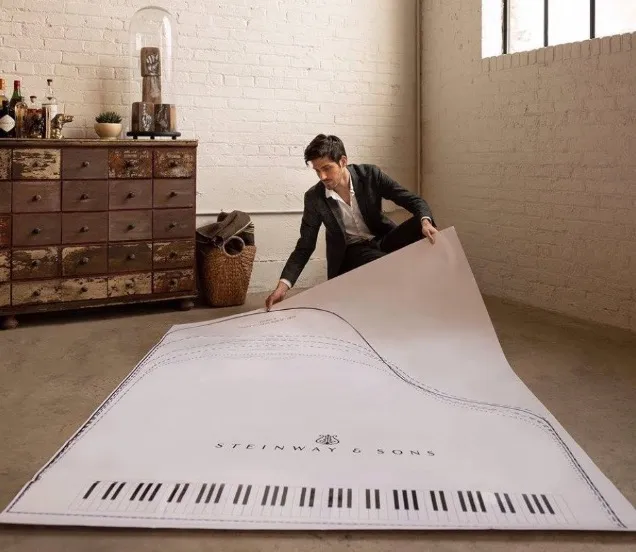
Floor template
Steinway & Sons doet het al jaren. Een papieren omlijning van een specifiek model meegeven aan de klanten. Je zou dit zelf ook kunnen maken van een groot stuk papier of karton.
Er komt veel meten, tekenen en uitknippen bij kijken, maar het is zeker een goede oplossing. Mocht je interesse hebben in een Steinway vleugel, dan kan je ook via hun website een aanvraag doen voor een template.
Floor template
Steinway & Sons has been doing it for years. They give their customers a paper outline of a specific model. You could also make this yourself from a large piece of paper or cardboard.
It involves a lot of measuring, drawing and cutting out, but it's certainly a proper solution. If you are interested in a Steinway grand piano, you can also apply for a template on their website.
Where you shouldn't place your piano
Sometimes you don't have a lot of options when it comes to placing a grand piano. That is okay! But always try to take the following rules of thumb into account as much as possible:
- As little direct sunlight as possible
- Avoid heating, stoves and radiators
- Do not put the piano in a draught
For more information on these rules, please read our blog on humidity.
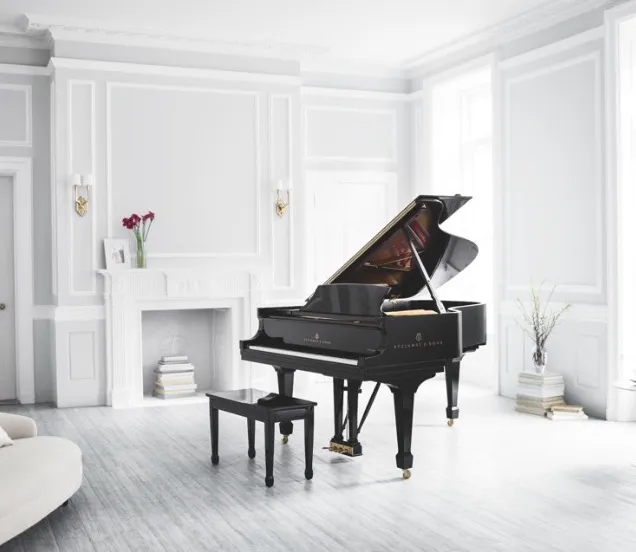
Acoustics
Perhaps the most fun part of installing a grand piano! Where will the grand piano sound best? First of all, you should think about the acoustics of the room where you want to place the grand piano. You have probably stood in an empty room without curtains. Every sound you make reflects in all directions.
You can probably imagine that a grand piano in an empty, unfurnished room does not usually sound very nice. Generally speaking, this does not happen very often. Your room is probably lined with curtains and/or furniture that absorb sound and make a room sound a lot more pleasant. So furnishing your living room is very often enough to get a very nice sounding room.
The floor also plays a major role. Wooden and concrete floors can resonate. Hard finishes such as tiled floors reflect sound too strongly. Carpet and rugs are your best friend. With furniture and carpets as absorbing elements, you can play with the acoustics of a room.
Nowadays you see many industrially built houses with a lot of concrete and steel and minimalistic interiors. Often the acoustics are not optimal to have a normal conversation, let alone play the piano in! Then you can consider strategically placing some absorption panels. Some manufacturers offer very nice solutions for this, which can be perfectly integrated in your interior. A small extra cost, but one that makes the investment in your instrument much more profitable!


